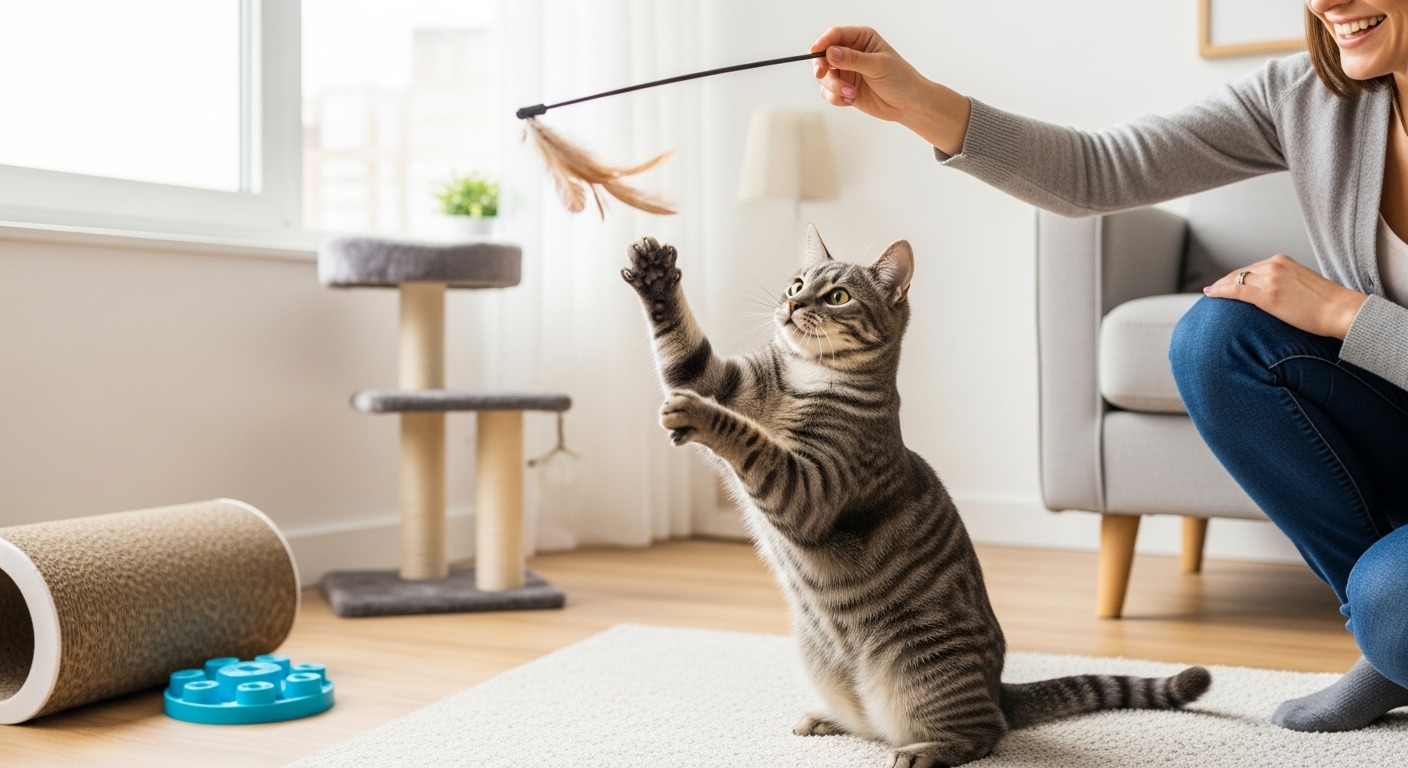Understanding and guiding your cat’s behavior can feel like unraveling a mystery—but with patience, positive reinforcement, and a few clever strategies, you can build trust, reduce unwanted antics, and strengthen your bond. Whether you’re tackling litter-box issues or teaching fun tricks, this guide has you (and your kitty) covered!
1. Why Positive Reinforcement Works for Cats
Cats respond best to rewards and gentle encouragement. Using treats, praise, or play to reinforce good behavior will:
- Build Trust: Your cat learns that desired behaviors earn rewards, not fear or scolding.
- Boost Confidence: Cats gain confidence when they succeed on their own terms.
- Strengthen Bond: Fun, reward-based sessions become quality time, deepening your connection.
2. Essential Tools & Prep
- High-Value Treats: Small, soft morsels like freeze-dried chicken or tuna flakes.
- Clicker or Marker Word: A clear “click” or “Yes!” signals the exact moment your cat does something right.
- Target Stick (Optional): A wand with a small ball to guide movements.
- Quiet, Familiar Space: Minimize distractions so your cat can focus and feel safe.
- Short Sessions: Aim for 3–5 minutes, once or twice daily—cats have short attention spans!
3. Core Behaviors to Teach
🐾 Litter-Box Reliability
- Consistent Location: Keep the box in a quiet, accessible spot.
- Positive Association: Toss a treat into the empty, clean box—let your cat discover it’s a good place.
- Mark Success: When your cat uses the box, click or say “Yes!” and offer a treat immediately.
🐾 Scratching Station Training
- Enticing Textures: Offer different posts—carpet, sisal, cardboard.
- Scent & Play: Rub catnip on the post and play around it to draw interest.
- Reinforce Usage: Each time your cat scratches the post, click and treat.
🐾 Recall (“Come When Called”)
- Pair Name & Treat: In a quiet room, say your cat’s name then immediately toss a treat at your feet.
- Gradual Distance: Increase the distance between you and repeat.
- Daily Practice: Call your cat at mealtime or playtime to build a strong recall.
4. Tackling Common Challenges
🐾 Aloof or Uninterested
- Find the Right Reward: Some cats prefer wet food or a favorite toy over kibble.
- Short & Sweet: End sessions on a high note—don’t push for more if your cat loses interest.
🐾 House-Marking or Spraying
- Neuter/Spay First: Many marking issues resolve after surgery.
- Thorough Cleaning: Use enzymatic cleaners to remove odors from accidents.
- Increase Vertical Space: Provide cat trees or shelves—territorial cats feel safer up high.
🐾 Excessive Meowing or Attention-Seeking
- Reward Quietness: Wait for a pause in meows, then click and treat.
- Scheduled Play: Redirect energy with two or three interactive play sessions daily.
- Ignore Demands: Don’t reward meowing with food or attention—reward only calm behavior.
5. Enrichment & Mental Stimulation
- Puzzle Feeders: Hide kibble in treat balls or puzzle boxes to engage hunting instincts.
- Interactive Play: Use feather wands, laser pointers, or motorized toys for chase-and-catch fun.
- Safe Outdoor Time: A “catio” or harness walks offer fresh stimulation and exercise.
- Hide & Seek: Toss treats into cardboard boxes or paper bags for exploration rewards.

